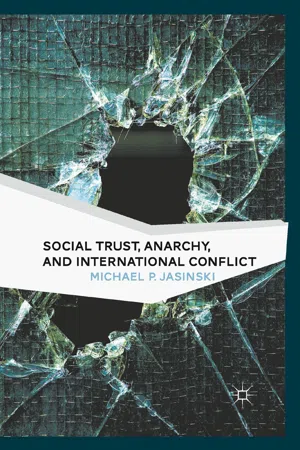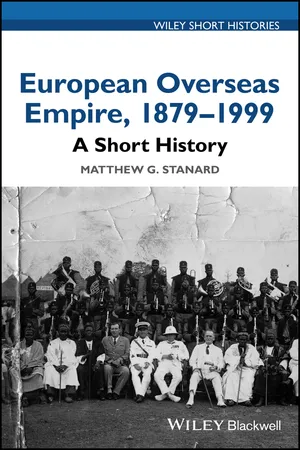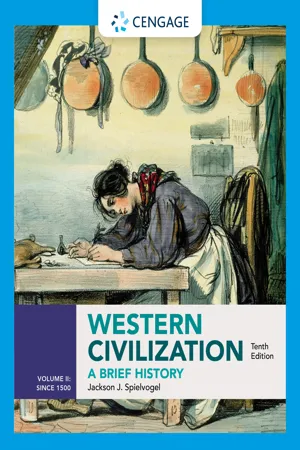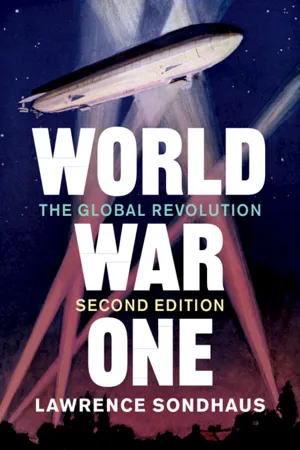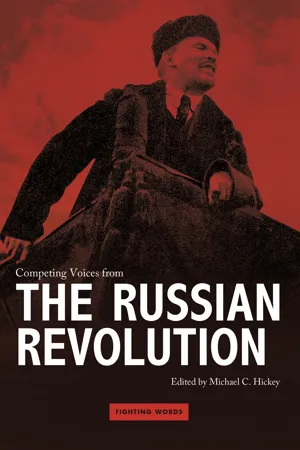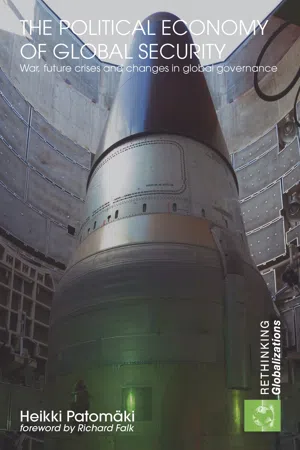History
Outbreak of WW1
The outbreak of World War I, also known as the Great War, occurred in 1914 and was triggered by the assassination of Archduke Franz Ferdinand of Austria-Hungary. The conflict involved major world powers and their alliances, leading to a devastating global war that lasted until 1918. The war had far-reaching political, social, and economic consequences, and its impact continues to be felt today.
Written by Perlego with AI-assistance
Related key terms
1 of 5
10 Key excerpts on "Outbreak of WW1"
- M. Jasinski(Author)
- 2011(Publication Date)
- Palgrave Macmillan(Publisher)
CHAPTER 9 The Outbreak of World War I A rguably the best case study to comprehensively illustrate the dynamics of the impact of the combination of the level of generalized social trust, major power status, and economic growth identified as key factors determining the onset of militarized interstate disputes in the quantitative analyses above is the interaction of European major powers leading up to the outbreak of World War I. With the centennial of the outbreak of the First World War rapidly approaching, it is perhaps appropriate to reflect on the causes of that system-altering conflict, all the more so as many of the factors that contributed to its outbreak persist even to this day. Although the quantitative portion of this project dealt with militarized interstate disputes rather than wars, it must be noted that wars are almost invari- ably preceded by such disputes, which then escalate until they pass the war threshold. Such was the case during the fateful events of 1914. One of these factors is the impact of economic development and interdependence on international conflict. Whereas today, in the era of globalization, there exists considerable optimism that the combination of democracy, universal hospitality, and international institutions (the three components of Kantian peace) have all but banished conflict at least among the states that are well integrated into the international economic system (Jervis 2002), one should not forget that similar predictions were being made prior to 1914. That staggeringly destructive and costly war took place in spite of predictions that such a conflict was extremely unlikely to occur due to the heightened international interdependence caused by the industrial revolution and the expanding international trade fostered by the so-called Pax Britannica, the growing wealth of nations, and the increased costs of major conflict due to a variety of modern technologies (Wolf 2005).- eBook - ePub
European Overseas Empire, 1879 - 1999
A Short History
- Matthew G. Stanard(Author)
- 2018(Publication Date)
- Wiley-Blackwell(Publisher)
Jünger fought on the Western Front, where fighting had commenced in August 1914, the month traditionally viewed as the opening of the war. But, well before then, conflict was underway elsewhere. Why fighting broke out in the first place is a question that has fascinated historians for more than a century. As this chapter shows, the dynamics of overseas imperialism was one of the war’s fundamental causes. That Jünger skirmished with colonial troops on the Western Front is unsurprising considering that Europe’s colonial powers mobilized hundreds of thousands of men from overseas to fight. Many more from colonial territories and beyond worked behind the front lines. Even if World War I was in essence a war of nationalism, the fact that fighting took place across continents and at sea made this global conflict a struggle not only between nations but also between empires. Moreover, the mobilization of colonial subjects and the drawing up of specific wartime colonial agreements had major ramifications for the postwar situation.The Outbreak of Conflict
The assassination of Archduke Franz Ferdinand on June 28, 1914, is widely regarded as the spark that started World War I, ending a long period of peace in Europe. A Bosnian Serb nationalist murdered the archduke, who was heir to the Austro-Hungarian throne, during an official visit to Sarajevo, Bosnia–Herzegovina’s main city. Austria–Hungary had administered the Ottoman Balkan provinces of Bosnia and Herzegovina since 1878 and annexed them outright in 1908. The archduke’s visit aimed to tie these newly acquired areas more closely to the Habsburg crown, but the date of the visit was poorly chosen: it was Serbia’s national day. Many Serbs envisioned a “Greater Serbia” embracing all Serbs, including Bosnian Serbs living under Habsburg rule. To them Austria–Hungary’s land grab meant that Bosnia’s Serbs had merely exchanged one foreign ruler for another. An attack on the heir to the throne would strike a blow at foreign rule, perhaps even destabilize the Habsburg crown. The reasoning was similar to that of anarchists hoping to bring down governments through terrorist attacks or political murders, for example the 1901 assassination of the US president William McKinley.The archduke’s death unleashed a chain of events that led to global war. Because the impending collapse of the Ottoman “sick man of Europe” threatened to reveal another long sufferer, Austria–Hungary, Vienna decided to use the assassination as a pretext to humiliate Serbia and to crush Serbian nationalism, nationalism being the greatest threat to the multinational Habsburg empire. Austria received assurances of support from Berlin, its main ally in the Triple Alliance (the other being Italy), and presented the Serbs with an ultimatum so punitive that it knew the Serbs would not comply. When Serbia did not completely meet the terms of the ultimatum, Vienna had its pretext for war. - No longer available |Learn more
- (Author)
- 2014(Publication Date)
- College Publishing House(Publisher)
________________________ WORLD TECHNOLOGIES ________________________ Chapter 4 World War I World War I (also known as the First World War , Great War or War of Wars , abbreviated WWI ) was a military conflict centered on Europe that began in the summer of 1914. The fighting ended in late 1918. This conflict involved all of the world's great powers, assembled in two opposing alliances: the Allies (centred around the Triple Entente) and the Central Powers. More than 70 million military personnel, including 60 million Europeans, were mobilized in one of the largest wars in history. More than 9 million combatants were killed, due largely to great technological advances in firepower without corresponding ones in mobility. It was the second deadliest conflict in history. ________________________ WORLD TECHNOLOGIES ________________________ The term World War One is particularly common in American English, whereas in Britain and the The Commonwealth, it is more commonly called the First World War . This term was first coined in 1920 as the title of Charles à Court Repington's book, but references to it being the first war did not become popular until World War II. The terms World War One and Two were first used in Time magazine in 1938. During and in the aftermath of the conflict it was called the Great War , particularly in British newspapers, whereas US media preferred simply the World War . It was also known as the War to End All Wars . The assassination on 28 June 1914 of Archduke Franz Ferdinand of Austria, the heir to the throne of Austria-Hungary, is seen as the immediate trigger of the war. Long-term causes, such as imperialistic foreign policies of the great powers of Europe, such as the German Empire, the Austro-Hungarian Empire, the Ottoman Empire, the Russian Empire, the British Empire, France, and Italy, played a major role. Ferdinand's assassination by a Yugoslav nationalist resulted in a Habsburg ultimatum against the Kingdom of Serbia. - eBook - PDF
Western Civilization
A Brief History, Volume II since 1500
- Jackson Spielvogel(Author)
- 2019(Publication Date)
- Cengage Learning EMEA(Publisher)
The historian Arnold Toynbee expressed what the era before the war had meant to his generation: [We had expected] that life throughout the World would become more rational, more humane, and more democratic and that, slowly, but surely, politi- cal democracy would produce greater social justice. We had also expected that the progress of science and technology would make mankind richer, and that this increasing wealth would gradually spread from a minority to a majority. We had expected that all this would happen peacefully. In fact we thought that mankind’s course was set for an earthly paradise. 3 After 1918, it was no longer possible to maintain naive illusions about the progress of Western civiliza- tion. As World War I was followed by the destructive- ness of World War II and the mass murder machines of totalitarian regimes, it became all too apparent that instead of a utopia, European civilization had become a nightmare. The Great War resulted not only in great loss of life and property but also in the annihilation of one of the basic intellectual precepts on which Western civilization was thought to be founded—the belief in progress. World War I and the revolutions it spawned can properly be seen as the first stage in the crisis of the twentieth century. 25-1 THE ROAD TO WORLD WAR I Q Focus Question: What were the long-range and immediate causes of World War I? On June 28, 1914, the heir to the Austrian throne, Archduke Francis Ferdinand, was assassinated in the Bosnian city of Sarajevo (sar-uh-YAY-voh). Although the decisions that European statesmen made during this crisis constitute the immediate cause and were crucial in leading to war, certain long-range underlying forces were also propelling Europeans toward armed conflict. These long-range forces explain the origins of World War I. - eBook - PDF
World War One
The Global Revolution
- Lawrence Sondhaus(Author)
- 2020(Publication Date)
- Cambridge University Press(Publisher)
1 The World in 1914 and the Origins of the War 1878 Congress of Berlin alters Balkan borders; Ottoman Empire weakened. 1882 Triple Alliance formed (Germany, Austria-Hungary, Italy). 1889–1914 Second Socialist International provides leading forum against militarism. 1892–94 France and Russia conclude military convention and treaty of alliance. 1898 German Reichstag approves “Tirpitz Plan” for naval expansion. 1898 Spanish-American War signals emergence of the United States as an imperial power. 1899–1902 Anglo-Boer War exposes Britain’s isolation; Anglo-Japanese alliance (1902). 1903 Coup in Serbia installs pro-Russian Karageorgevic ´ dynasty. 1904–05 Entente Cordiale links France with Britain. Russo-Japanese War foreshadows trench warfare. 1906 HMS Dreadnought commissioned; Anglo-German naval race accelerates. 1907 Anglo-Russian Entente completes Triple Entente. 1908 Austria-Hungary annexes Bosnia (occupied since 1878). 1911–12 Italo-Turkish War features first combat use of airplanes. 1912–13 Balkan Wars further weaken Ottoman Empire, destabilize region. the world in 1914 and the origins of the wa r 8 The controversy over the origins of World War I began in the summer of 1914, as soon as the declarations of war were exchanged. The decision of the victors to include a war-guilt clause in the Treaty of Versailles reflected their conviction, unanimous as of 1919, that Germany had been responsible for the war. Their verdict was rejected by virtually all German academicians and, during the 1920s, by a broad spectrum of revisionist historians who blamed the alliance system, the great powers collectively, or one or more of the great powers other than Germany. While the experience of World War II refocused the lion’s share of the responsibility on Germany, the scholarship of subsequent decades further explored the roles of all of the belligerents, their domes- tic politics, diplomatic alignments, and war aims as of 1914. - eBook - PDF
Competing Voices from the Russian Revolution
Fighting Words
- Michael C. Hickey(Author)
- 2010(Publication Date)
- Greenwood(Publisher)
It also has important implications for the study of revolutionary social history. One recent study, for example, has argued that during the war peasants developed new ways of thinking and interacting with the state that shaped their views of revolution in 1917 and then influenced their interactions with the Soviet government during the Civil War. 10 15 THE CONTEXT OF WORLD WAR I A Brief Description of Russian Conditions during World War I In July 1914, Tsar Nicholas II decided to mobilize the Russian Army against the Austro-Hungarians. For more than a decade, tensions had been building toward a general European war. The tsar’s declaration— Russia’s response to the complicated diplomatic crisis set off when a Serbian nationalist assassinated the Austrian Archduke Franz Ferdinand in the Bosnian city of Sarajevo on 28 June 1914—brought matters to a head. Germany responded by declaring war on Russia, which set off a chain reaction of war declarations. Dominos set up by prewar alliance systems crashed one upon another: Russia, Great Britain, France, and their allies now were at war against Germany, Austro-Hungary, and their allies (which from 1915 would include the Ottoman Turks). Many of the tsar’s advisors thought Russia simply could not back down from this war, especially given its diplomatic failures since the humiliating Russo- Japanese War of 1904–1905. Most of them believed that the war would strengthen Russia’s position in the European order and reinforce its role as the leader of the Slavic nations. A few expected that war would quell the strikes and student demonstrations that had been building in number and force in the first half of 1914. The conservative official Petr Durnovo, however, had warned the tsar that Russia was ill-prepared for a major war, that Russia’s allies would let it bear the brunt of the conflict, and that the result could very well be collapse and revolution. - eBook - ePub
- John Mueller(Author)
- 2013(Publication Date)
- Cornell University Press(Publisher)
CHAPTER 3
WORLD WAR I AS A WATERSHED EVENT
European attitudes toward war changed profoundly at the time of World War I. There is no way to quantify this change except perhaps through a rough sort of content analysis. Before the First World War it was very easy, as documented in the previous chapter, to find serious writers, analysts, and politicians in Europe and the United States exalting war as desirable, inevitable, natural, progressive, and necessary. After the First World War, such pronouncements become extremely rare, although the excitement of the combat experience continued (and continues) to have its fascination to some.1This suggests that the appeal of war, both as a desirable exercise in itself and as a sensible method for resolving international disagreements, diminished markedly on that once war-racked continent. In an area in which war had been accepted as a standard and permanent fixture, the idea suddenly gained substantial currency that war there was no longer an inevitable or necessary fact of life and that major efforts should be made to abandon it.This change has often been noted by historians and political scientists. Arnold Toynbee points out that World War I marked the end of a “span of five thousand years during which war had been one of mankind’s master institutions.” In his study of wars since 1400, Evan Luard observes that “the First World War transformed traditional attitudes toward war. For the first time there was an almost universal sense that the deliberate launching of a war could now no longer be justified.” Bernard Brodie points out that “a basic historical change had taken place in the attitudes of the European (and American) peoples toward war.” Eric Hobsbawm concludes that “in 1914 the peoples of Europe, for however brief a moment, went lightheartedly to slaughter and to be slaughtered. After the First World War they never did so again.” And K. J. Holsti observes, “When it was all over, few remained to be convinced that such a war must never happen again.”2 - eBook - PDF
- Paul Boyer, Clifford Clark, Karen Halttunen, Joseph Kett(Authors)
- 2017(Publication Date)
- Cengage Learning EMEA(Publisher)
Global Involvements and World War I, 1902–1920 Defining America’s World Role, 1902–1914 (622) What goals underlay America’s early-twentieth-century involvements in Asia and Latin America? The “Open Door”: Competing for the China Market The Panama Canal: Hardball Diplomacy Roosevelt and Taft Assert U.S. Power in Latin America and Asia Wilson and Latin America War in Europe, 1914–1917 (626) Considering both immediate and long-term factors, why did the United States go to war in 1917? The Coming of War The Perils of Neutrality The United States Enters the War Mobilizing at Home, Fighting in France, 1917–1918 (629) How did Washington mobilize the nation for war, and what role did U.S. troops play in the war? Raising, Training, and Testing an Army Organizing the Economy for War With the American Expeditionary Force in France Turning the Tide Promoting the War and Suppressing Dissent (635) How did Americans respond to propaganda and suppression of dissent? Advertising the War Wartime Intolerance and Dissent Suppressing Dissent by Law Economic and Social Trends in Wartime America (638) What was the war’s economic, political, and social impact on the American home front? Boom Times in Industry and Agriculture Blacks Migrate Northward amid New Activist Energies Women in Wartime Public-Health Crisis: The 1918 Influenza Pandemic The War and Progressivism Joyous Armistice, Bitter Aftermath, 1918–1920 (644) How did the League of Nations begin, and why did the Senate reject U.S. membership in the League? Wilson’s Fourteen Points; The Armistice The Versailles Peace Conference, 1919 The Fight over the League of Nations Racism and Red Scare, 1919–1920 The Election of 1920 The Whole Vision (649) 22 WORLD WAR I POSTER URGING FOOD CONSERVATION, BY ILLUSTRATOR JAMES MONTGOMERY FLAGG Home-front propaganda played a key role in mobilizing Americans in support of the war effort in 1917–1918. - eBook - PDF
Competing Visions of World Order
Global Moments and Movements, 1880s-1930s
- Sebastian Conrad, Dominic Sachsenmaier(Authors)
- 2007(Publication Date)
- Palgrave Macmillan(Publisher)
PART TWO World War I as a Global Moment: Implications for Conceptions of World Order CHAPTER 5 Dawn of a New Era: The “Wilsonian Moment” in Colonial Contexts and the Transformation of World Order, 1917–1920 Erez Manela Introduction When Woodrow Wilson, the president of the United States, steamed into the harbor of Brest on the French Atlantic coast on Friday, December 13, 1918, the mayor of Brest, who met the president at the dock, hailed him as an apostle of liberty, come to relieve the peoples of Europe from their suffering. 1 The next morning, driving along the streets of Paris, Wilson was cheered by crowds of ecstatic Parisians: “Vive Wilson! Vive l’Amérique, vive la liberté!” The press in France and elsewhere sang his praises, and labor leaders hailed him as “the incarnation of the hope of the future.” 2 Similar receptions met Wilson when he traveled to London and Rome in the next several weeks. 3 The French pacifist author and Nobel laureate, Romain Rolland, seemed to express these widespread sentiments when he hailed Wilson as a figure poised to lead humanity toward a better, more just world, and called on him “to establish the new Charter of enfranchisement and of union” that would bring together all peoples. 4 Great wars are transformative events; they destroy not only lives and property, but also established world orders—norms, institutions, ideas, perceptions—in short, the old ways of thought and practice. The Great War S. Conrad et al. (eds.), Competing Visions of World Order © Sebastian Conrad and Dominic Sachsenmaier 2007 of 1914–1918 was an event unprecedented in the sheer scale of its destruction. It extinguished millions of lives and caused untold devastation; it also threat- ened the collapse of all order and stability in international relations. In the wake of the war many around the world hoped, and expected, the postwar world to be entirely different from that which came before it. - eBook - ePub
The Political Economy of Global Security
War, Future Crises and Changes in Global Governance
- Heikki Patomäki(Author)
- 2007(Publication Date)
- Taylor & Francis(Publisher)
Taken at face value, Choucri and North’s positivist methodology implies reification of not only actions but also of struggles over, and transformations, of the geo-historical context in the period 1870–1914. However, if interpreted merely as an analytical description and systematic assessment of some of the contrastive demi-regularities of the 1870–1914 era, Choucri and North’s study illuminates how different components of this context tended to reinforce each other. It also illuminates how they generated a world historical causal path that in a few decades resulted in setting a stage for the outbreak of the First World War.A synthetic explanation of the 1914–18 war: actors, structures and nodal points
In attempting to explain the late nineteenth century new imperialism and the First World War, I have now criss-crossed the same ground from different angles. I have moved from the empirical level of analysis to a more abstract analysis of layers of geo-historical realities that produced the conditions for the First World War. I have also tried to identify weak points of view and to look for the best candidates among competing alternatives. Although I could have continued the process of assessing empirical and theoretical evidence for much longer, I am now in a position to conclude with what looks like a plausible model. Judgments about plausibility are tricky, however. It is always possible to find an even stronger or more defensible position, that is, a model and story which is truer. Perhaps even more strikingly, however, we also know that experts in world politics have an especially poor track record in revising their understandings on the basis of evidence (Tetlock 1999, 2005). This is in part because of the methodological problems of explaining outcomes of open systems.Given the multiplicity of relevant conditions in an open system, any attempt to explain a major outcome such as the First World War must include manifold causal conditions and mechanisms. It must also locate them in time, and thereby tell an explanatory story. Usually actors acknowledge and monitor several conditions for action – even though their specific understanding may also be vague, contradictory or contested – yet many conditions remain also unacknowledged. Since cause is a necessary part of a given complex condition,24
Index pages curate the most relevant extracts from our library of academic textbooks. They’ve been created using an in-house natural language model (NLM), each adding context and meaning to key research topics.
